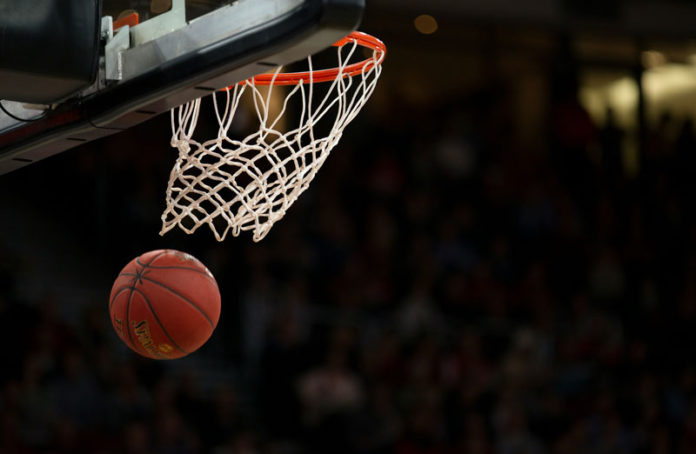
Published in cooperation between Celtic Media and The Healdsburg Tribune
The NCAA Tournament is one of the most thrilling events in American sports, but for businesses, it presents a major financial burden. As employees turn their attention to March Madness, millions of dollars are lost in productivity due to time spent watching games, checking brackets and engaging in office pools. Companies face a dilemma—embrace the excitement or attempt to curb distractions.
The tournament’s impact on workplace efficiency has led to varied responses from employers, with some leveraging it for engagement while others see it as a costly disruption.
The Financial Cost of March Madness on Businesses
March Madness is a productivity killer, with staggering financial losses for businesses. According to estimates, the NCAA Tournament causes over $17.3 billion in lost productivity each year, as millions of employees focus on their brackets instead of their job responsibilities. A study by Challenger, Gray & Christmas projects that more than 50 million workers will spend time watching games instead of working, costing companies an average of $4.1 billion per workday during the tournament.
Employees spend an average of six hours per week during March Madness watching games, researching teams or discussing brackets with coworkers. This distraction significantly reduces efficiency, with some workers even calling in sick or taking extended lunch breaks to catch key matchups. Research indicates that at least 56 percent of employees participate in NCAA pools, further reducing focus and productivity.
How March Madness Affects Employee Engagement and Morale
While businesses experience financial losses, some argue that March Madness fosters a sense of camaraderie among employees. Studies show that 78 percent of workers feel more engaged in the workplace when they participate in office pools. However, this enthusiasm comes with the challenge of balancing enjoyment with meeting work deadlines.
With more than $3.1 billion wagered on March Madness legally and illegally, office pools are a significant part of workplace culture. Many employees use work time to research teams and update their brackets, creating an environment where productivity takes a backseat. Kansas sportsbooks see a surge in betting activity during this period, as employees engage in friendly wagers both inside and outside the workplace.
Company Reactions to March Madness in the Workplace
Some companies choose to embrace the NCAA Tournament, setting up designated break rooms with TVs or allowing employees to stream games during lunch breaks. A survey found that 42 percent of businesses provide an official NCAA pool to increase workplace morale while keeping distractions under control.
On the other hand, 28 percent of companies implement strict policies prohibiting March Madness-related activities during work hours. Some businesses even block sports websites or restrict streaming services to limit distractions. Employers in high-demand industries like finance and healthcare are more likely to enforce these policies to maintain operational efficiency.
Productivity Tools and Strategies Used by Companies
To combat lost productivity, many businesses use tracking software to monitor employee computer usage. These tools analyze internet activity, flagging excessive visits to sports sites and streaming platforms. Companies employing these measures report a 14 percent decrease in March Madness-related distractions compared to those without restrictions.
To counteract productivity losses, some businesses offer flexible schedules, allowing employees to adjust work hours around important games. Studies show that companies implementing such policies see a 22 percent increase in overall employee satisfaction without significant losses in productivity.
The Economic Impact of March Madness Beyond the Workplace
While businesses suffer from lost productivity, the hospitality industry thrives during March Madness. Bars and restaurants experience a 32 percent increase in revenue, as fans flock to watch games. Popular sports bars report peak sales, with some establishments generating over $500,000 in revenue during the tournament.
The legalization of sports betting has intensified March Madness engagement, with $15.5 billion wagered legally in 2023 alone. Online sportsbooks see a dramatic spike in activity, with companies like DraftKings and FanDuel reporting record betting volumes during the tournament.
How Businesses Can Leverage March Madness to Their Advantage
Instead of combating March Madness, some companies turn the event into a team-building opportunity. Hosting official bracket challenges, providing catered watch parties and allowing game-day-themed casual dress codes improve morale and increase engagement. A report by Gallup suggests that companies encouraging such activities see a 20 percent boost in employee satisfaction during March.
Many businesses capitalize on the tournament’s massive audience through targeted promotions and sponsorships. Companies running NCAA-themed marketing campaigns report a 35 percent increase in customer engagement compared to their regular advertising efforts.
Balancing Fun and Work During March Madness
Some businesses have found success by setting up designated viewing areas where employees can watch games without affecting workflow. Studies show that companies adopting this approach reduce productivity losses by 18 percent, as workers focus on tasks before and after key matchups.
Allowing short, scheduled breaks for employees to check scores or watch portions of games can prevent prolonged disruptions. Research indicates that 60 percent of employees feel more productive when given structured time to engage with March Madness instead of sneaking glances at their screens throughout the day.
Future Trends in Workplace Policies During March Madness
With remote work becoming more common, the challenge of maintaining productivity during March Madness has shifted. Employers have less oversight, leading to an increase in untracked streaming and betting. However, some businesses use this as an opportunity, offering employees the flexibility to work around games while still meeting deadlines.
Artificial intelligence is becoming a tool for businesses to analyze employee activity and detect trends in workplace efficiency. Some companies are investing in AI-driven analytics to measure the impact of March Madness on productivity, using data to refine policies for future tournaments.
The Lasting Impact of March Madness on Workplace Productivity
March Madness is an unavoidable annual event that businesses must navigate. While some companies choose to embrace the excitement, others view it as a costly distraction. The economic impact is undeniable, with billions of dollars lost each year due to reduced productivity.
Ultimately, businesses that find a middle ground—acknowledging the enthusiasm surrounding the tournament while maintaining productivity—achieve the best results. Whether through structured breaks, office engagement or strategic policies, companies must adapt to the reality that March Madness is more than just a sports event—it’s a cultural phenomenon that significantly impacts the workplace.








